Green Darners have been ovipositing in the Wetlands (3/13). Up until this Tuesday I had only seen males patrolling the area.
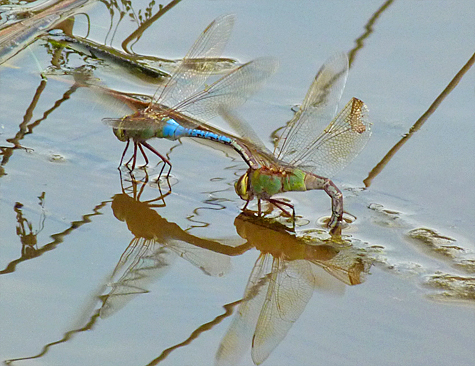
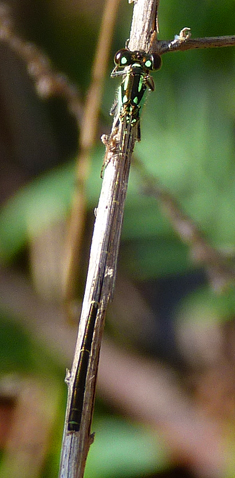
I was finally able to confirm the emergence of Fragile Forktails (Ischnura posita). I photographed a damselfly a week ago (3/7) but wasn’t sure of its identity, although I was fairly confident that it was a forktail.
I’ve seen these forktails here at the Museum as early as mid February. It’s curious that I haven’t seen one earlier this year considering the unusually warm winter that we’ve experienced.
We should be seeing other odes emerging very soon. Blue Corporals, Lancet Clubtails, and Common Basketails are all early dragonflies. I would expect to see them within the next few weeks. We’ll have to wait and see to be sure.
Although I had seen an American Toad on March 9, I hadn’t heard the high pitched trill of its call until Tuesday (3/13). Several were heard and seen calling from the pond in the Red Wolf Enclosure on the 14th of March.
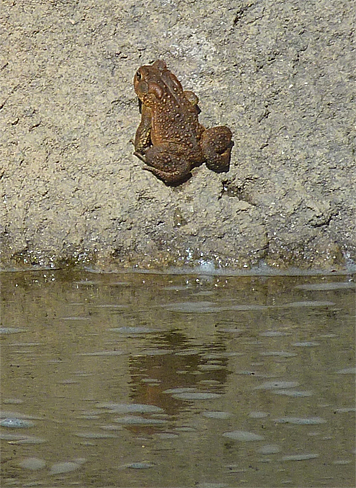
I don’t recall whether or not I’d seen a Northern Cricket Frog here at the Museum yet this season, but I photographed one on Thursday. No more than 1.5 inches, they’re easy to miss.
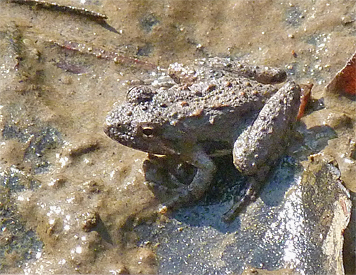
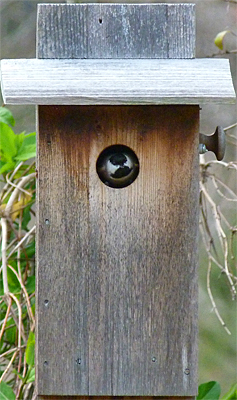
Who’s that poking its head out of one of the six bluebird nest boxes here at the Museum? It’s a Carolina Chickadee. The bird made at least five trips in and out of the box while I stood watching it. I didn’t see it bring anything into or out of the box, but it seemed to be sizing it up for use.
I’ve noticed activity at three of our six nest boxes. So far it appears that the birds are simply inspecting the boxes for future use as I haven’t seen any movement of nest material into the boxes.
The birds should start moving in soon. I suspect we’ll see some nest material being added to the boxes any day now.
A male Belted Kingfisher spent nearly the entire day on Tuesday (3/13) here at the Wetlands apparently trying to impress our female. He flew about the Wetlands, diving in the water after fish, calling out to her, and in general showing off with stunt-flying antics around the Wetlands, but I don’t think she’s buying, yet. He wasn’t seen the following day.
He’ll be back.
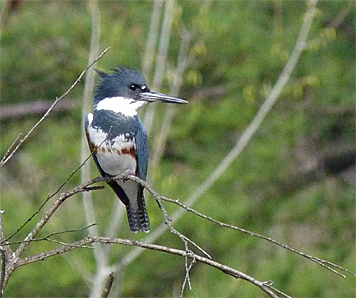
I watched a Downy Woodpecker working the trees along the path near the top of the boardwalk apparently looking for beetle larvae. The woodpecker searched the branches and trunks of about a dozen trees methodically searching each crevice for its prey, although I didn’t actually see it with prey. Now that I think of it, perhaps the bird was looking for a sounding board, a nice hollow bit of limb in which to drum out its mating song.
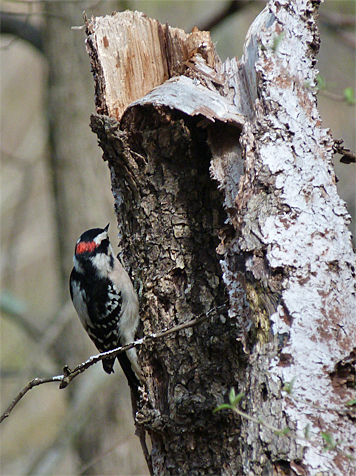
Almost forgot, the tent caterpillars.
As I’ve mentioned in an earlier post, I checked on the tent caterpillars that hatched Marched 3rd and found them concentrated around the leaf buds of the cherry tree on the 7th of March. I stopped by several times since.
On the 9th I found all of the caterpillars huddled under a twig. It appeared as though they were all dead, expired from lack of food.
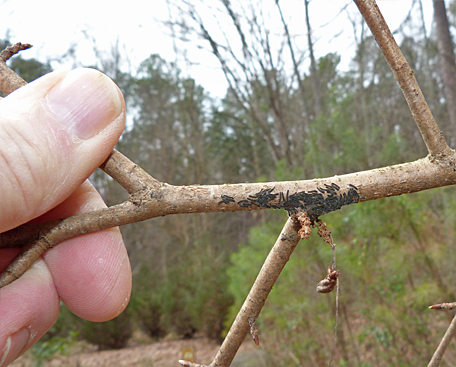
On Tuesday, March 13, I took another peek just to be sure. The caterpillars were gone. Had a bird eaten them?
A closer look around the tree found the caterpillars spread throughout the main branch on which their egg case was located, a caterpillar here, a caterpillar there. They all seemed to be going somewhere, obviously looking for food that wasn’t there. The buds that had been there hadn’t grown into leaves yet.
The caterpillars couldn’t have eaten very much if anything, there was nothing there to eat! And they certainly hadn’t grown, caterpillars tend to grow rapidly from doing nothing but eat all day, but you need food for growth.
The following day, one day later, there were leaves poking out of the buds, they were starting to grow.
I will check on them later.
You may be wondering, “why does he care so much about tent caterpillars, they’re a destructive lot of little insects?” You’re right, they can defoliate a cherry tree very quickly, and thoroughly. But how often do you get to personally witness the struggle for survival, albeit on a mini scale as with these caterpillars. And, tent caterpillars are early season insects doing their dirty work on the trees in time for the tree to “bounce back” from the defoliation.
There’s one large Black Cherry here on the Museum grounds that’s attacked by these caterpillars each spring. The caterpillars perform a near total defoliation of the tree. The tree always comes back to life after the caterpillars crawl down from their tents to find nice cozy spots in which to pupate away from the tree.
The caterpillars are picked up by thousands of children each spring as they cross sidewalks, hiking trails, driveways, and the paths here at the Museum. For many kids this is their first introduction to caterpillars and they’re usually fascinated by them. I see many kids walking around the outdoor areas of the Museum each year with a caterpillar crawling up their arm or in their loosely clasped fingers. Some of the kids take them home and put them in a terrarium, or jar. The caterpillars pupate, and after a short while, to the amazement of the children, a little brown moth appears.
That’s why I care about tent caterpillars.